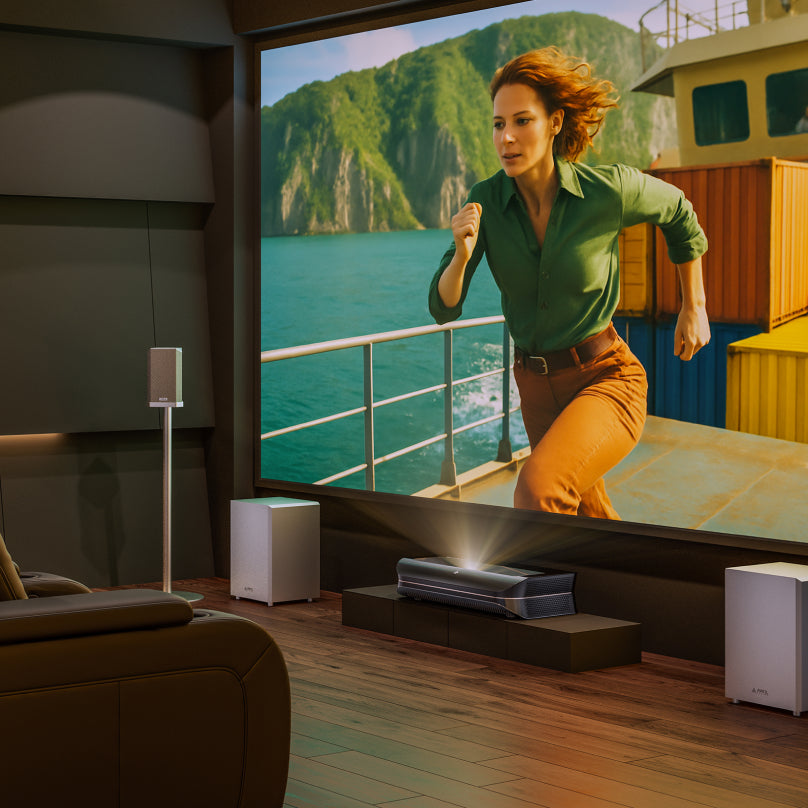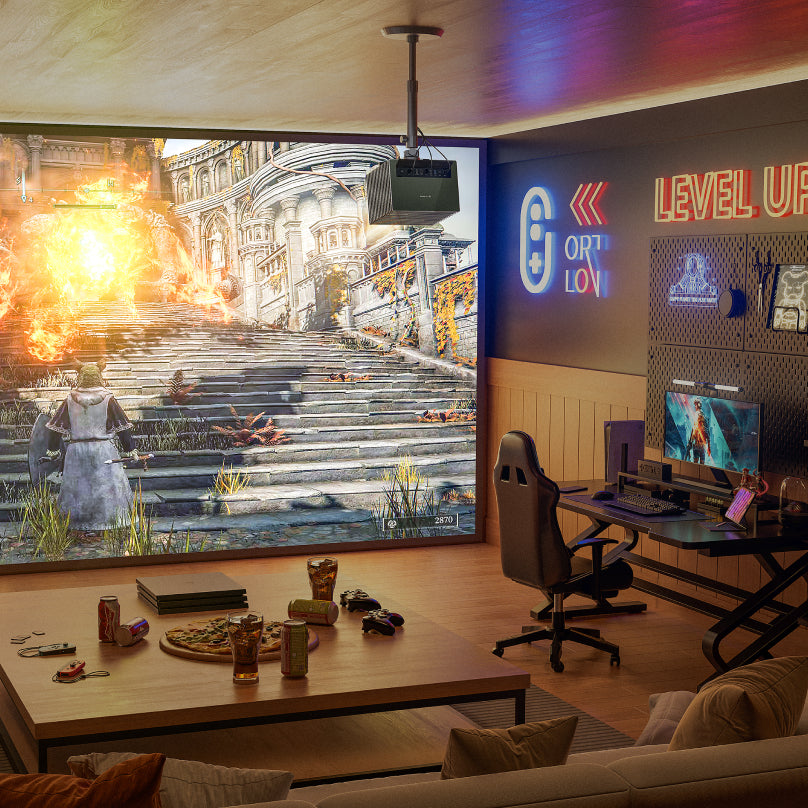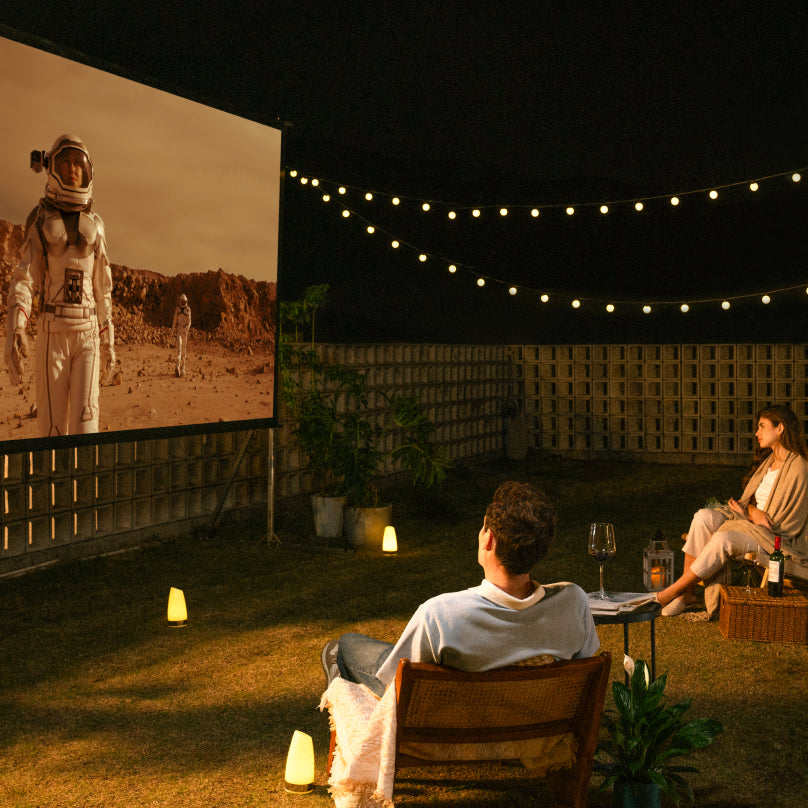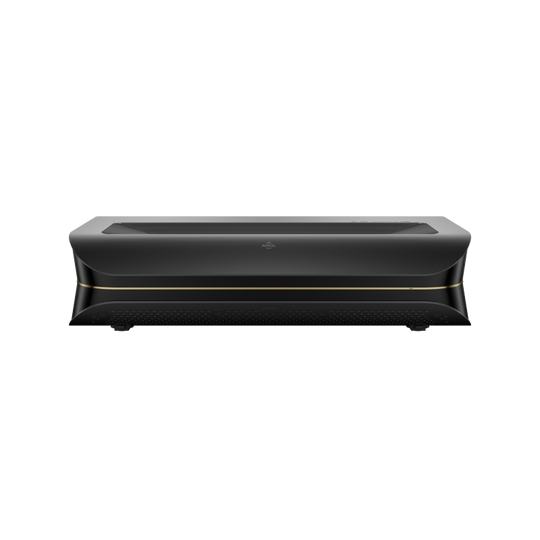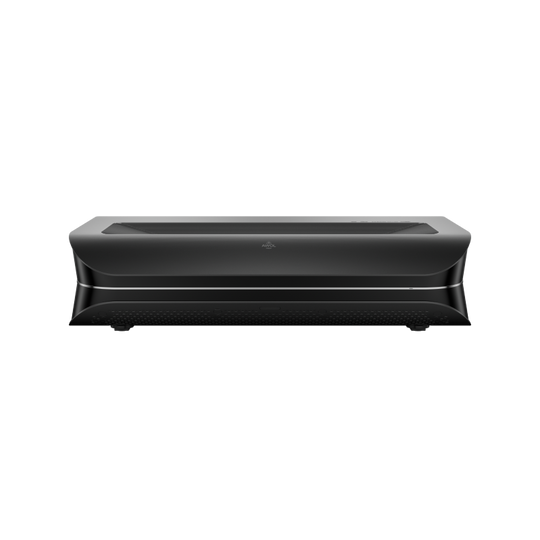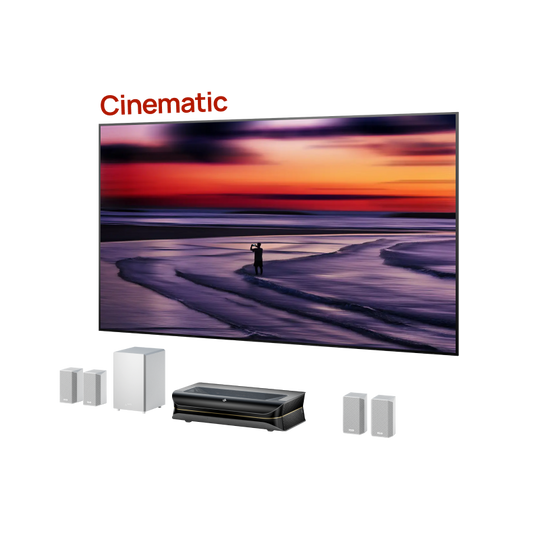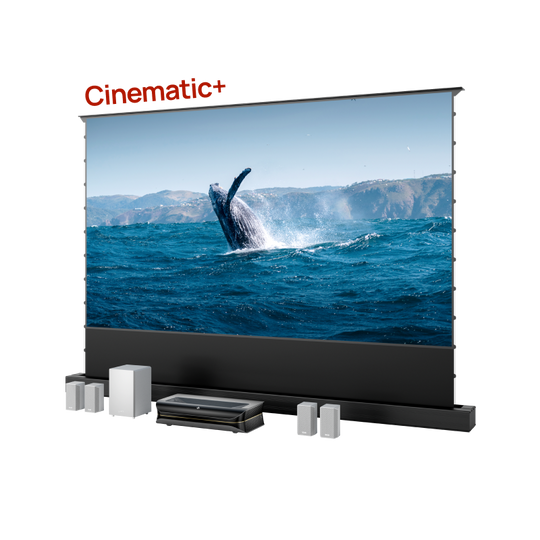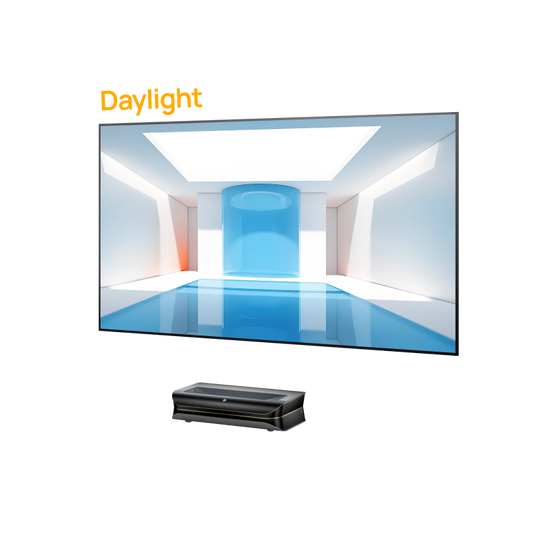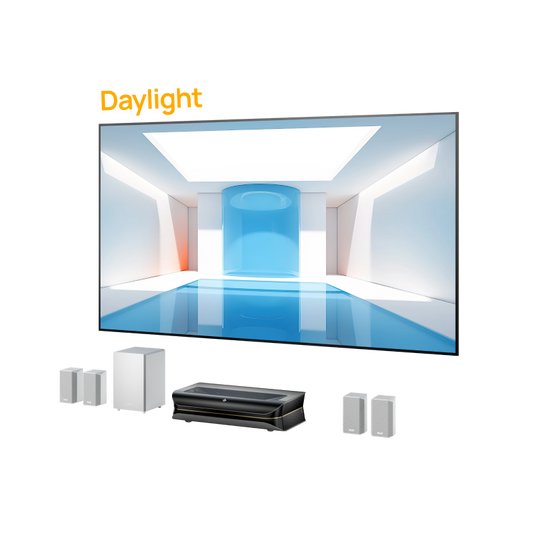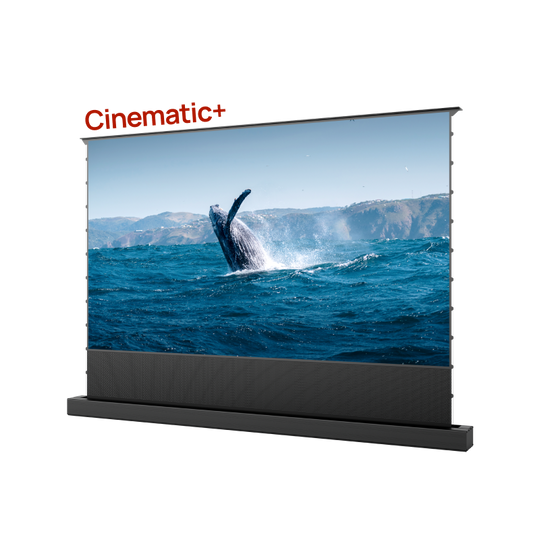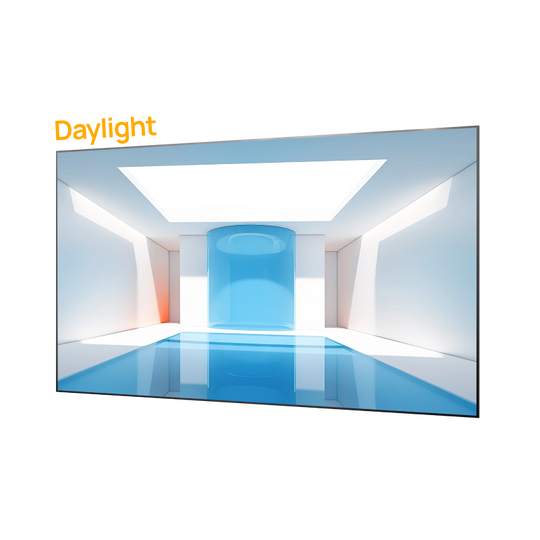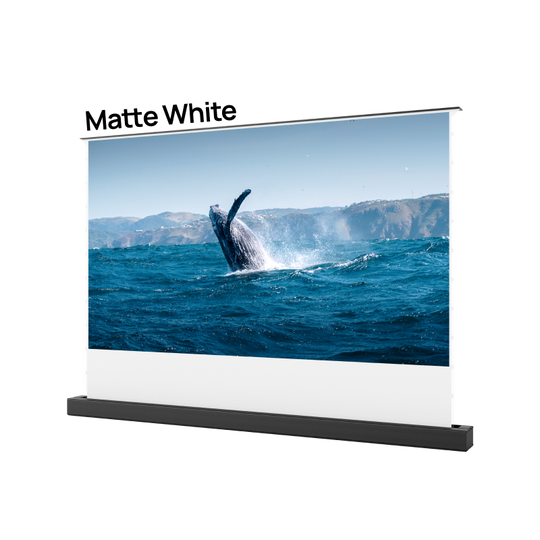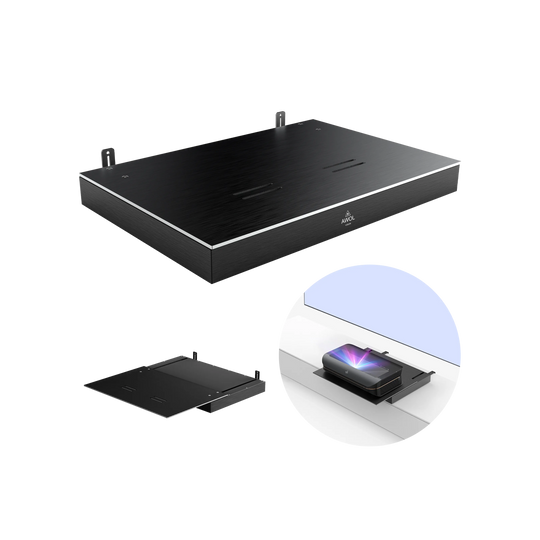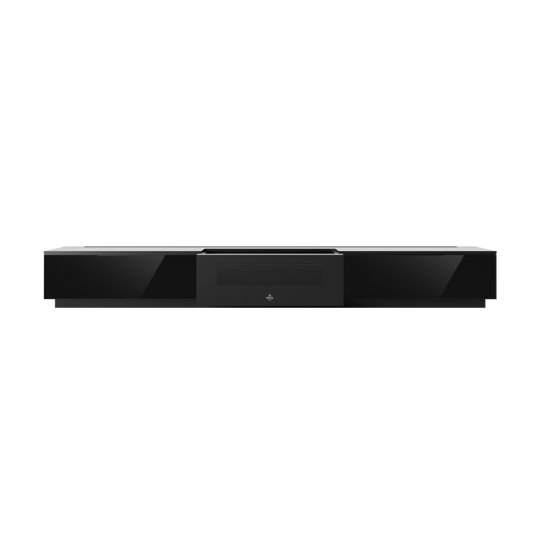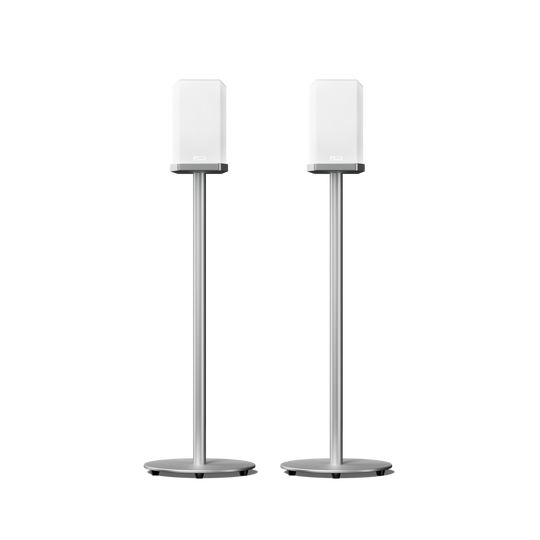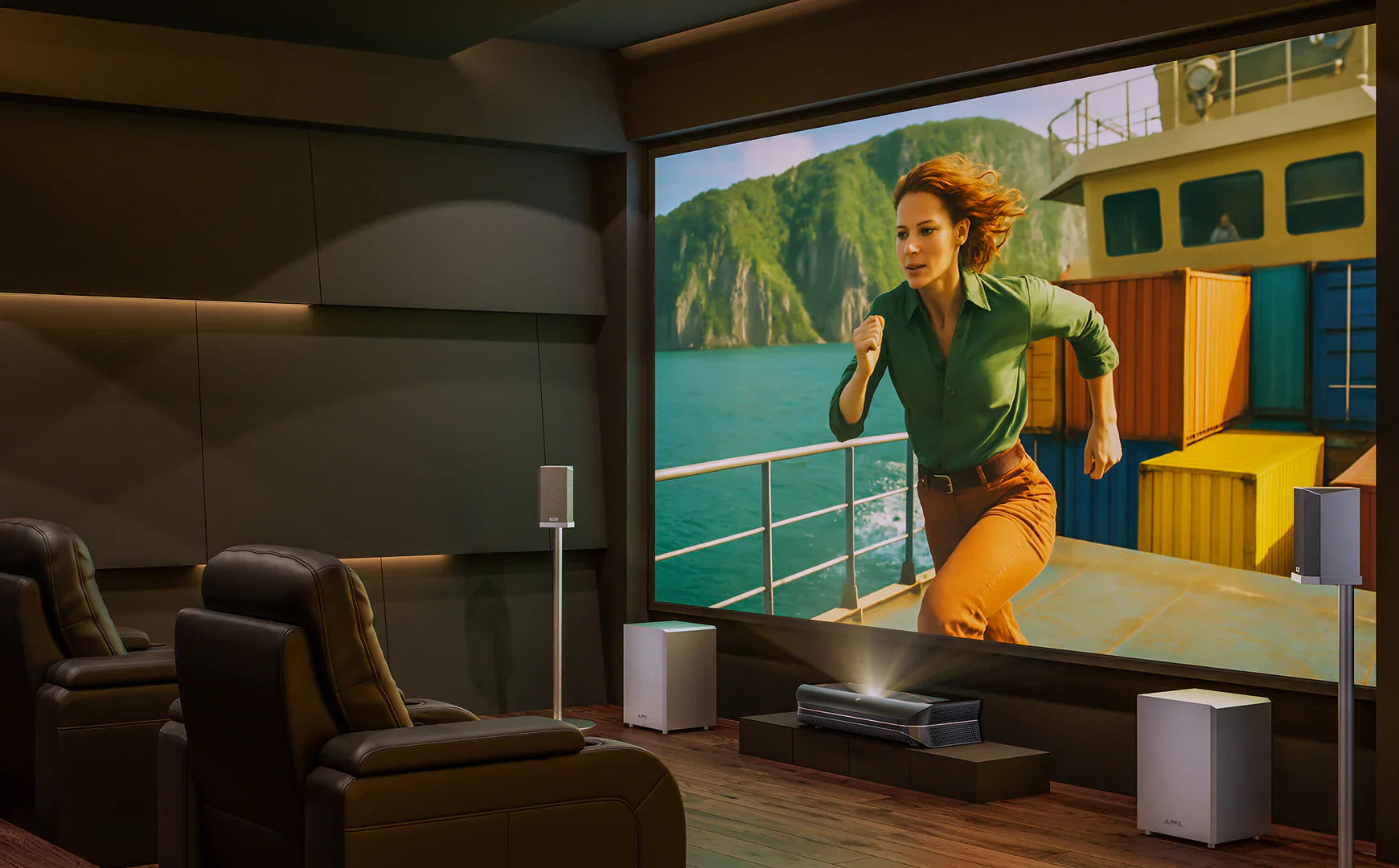Is a projector the right upgrade for your living room? For anyone seeking an experience beyond the physical limits of a television screen, the answer in 2025 is a resounding yes.
Thanks to key technological leaps in brightness, color, and ease of use, the modern projector is no longer just an alternative to a TV; it’s an upgrade. It has evolved from a niche hobbyist item into a viable—and in many cases, superior—solution for the main hub of your home. This definitive guide will cut through the confusion, providing an honest look at the pros and cons, the technology that matters, and a step-by-step plan to help you decide if it's the right choice for you.
An Honest Look: Projector vs. TV in a Real-World Living Room
Before you can choose a product, you need to understand the fundamental trade-offs. Here’s a breakdown of where projectors shine and where they still face challenges.
The Unmatched Advantages of a Projector:

-
Scale and Immersion: This is the most significant advantage. A projector can easily create a 100-inch, 120-inch, or even 150-inch image. This isn't just a bigger picture; it's a fundamental shift in the viewing experience, creating a cinematic feel that even the largest consumer TVs cannot replicate.
-
A More Discreet Aesthetic: When it's off, a television is just a giant black rectangle that can dominate a room's decor. A projector, on the other hand, can be almost invisible. The screen retracts into the ceiling or a floor unit, preserving your wall space and interior design.
-
Enhanced Eye Comfort: Staring at a TV screen means you're looking at a direct light source. A projector works by reflecting light off a neutral screen surface. This reflected light is generally considered less fatiguing on the eyes, making it ideal for long movie marathons or binge-watching an entire season of a show.
The Practical Challenges to Consider:

-
Ambient Light: This is the #1 hurdle for any projector. Daylight from windows and even bright lamps in the room can wash out a projected image, making it appear faded and lacking in contrast. The solution to this is not just closing the curtains, but a strategic combination of a high-brightness projector and a specialized screen designed to reject ambient light.
-
The Need for a Sound System: While projectors have come a long way, their small, built-in speakers are no match for the epic image they produce. To get sound that matches the scale of the picture, you must factor in the cost and placement of at least a quality soundbar or a full AV receiver and speaker system.
-
Total Cost of Ownership: It's important to look at the whole picture. A complete, high-quality setup—which includes the projector, a proper screen, and a capable sound system—is an investment. While budget options exist, a premium 4K laser projector setup can often meet or exceed the cost of a premium 85-inch television.
The 2025 Projector Tech Checklist: What Actually Matters
Don't get lost in marketing jargon. For a living room environment, a projector's performance comes down to these four critical pillars of image quality.
#1: The Light Source - Purity of Color
The engine of a projector is its light source. Older models used a lamp, but modern high-performance projectors use lasers, which provide instant on/off capabilities, incredibly consistent brightness over their lifespan, and last for 20,000 hours or more.
The most advanced projectors take this a step further, using a Triple Laser system. This technology uses separate red, green, and blue lasers to generate the image, eliminating the need for a spinning color wheel found in many other projectors. This results in an exceptionally wide color gamut and prevents the distracting "rainbow effect" that some viewers are sensitive to. For example, premium models like the AWOL Vision LTV-3500 Pro can achieve over 107% of the BT.2020 color space, delivering unparalleled color fidelity that lets you see movies exactly as the director intended.
#2: Brightness - The Power to Perform in Light
For a projector to work in a room with windows, it needs to be powerful. The industry-standard metric for brightness is ISO Lumens (ISO 21118). It's the most trustworthy number to look for when comparing models.
For a living room, here is a simple benchmark: a minimum of 2,000 ISO Lumens is needed for a usable image, with 2,500 or more being ideal to produce a vibrant, saturated picture even with some ambient light present.
#3: Dynamic Range and HDR - Seeing Every Detail
High Dynamic Range (HDR) is what gives an image its "pop," allowing you to see fine details in both the deep shadows and bright highlights of a scene. While most 4K projectors support standard HDR (like HDR10), the gold standard is dynamic HDR. Comparing SDR vs. HDR with our dedicated blog.
Formats like Dolby Vision analyze a movie scene-by-scene (or even frame-by-frame) to optimize the contrast and color continuously. Until recently, this feature was rare in projectors, but top-tier USTs, such as those in AWOL Vision's Pro series, now include Dolby Vision support, setting a new benchmark for spectacular HDR performance.
#4: Gaming & Motion - Keeping Your Image Responsive
For gamers, a beautiful image is only half the battle; you also need instant, lag-free response from your controller. This is measured by input lag. When buying a projector for gaming, look for a dedicated Game Mode. For a great experience, the input lag should be below 40ms for casual gaming, and under 20ms for a serious competitive edge.
Step-by-Step: Clean and Simple Living Room Projector Setup
A successful projector setup is all about smart integration. Here's how to achieve a clean, professional look without the traditional complexity.
Step 1: The Foundation - The Ultra-Short Throw (UST) Projector
The key innovation that makes projectors so viable for living rooms today is the UST projector. This type of projector sits on a normal media console just inches away from the wall, casting a massive image upwards. This brilliant design eliminates the need for complex ceiling mounts and running long cables across the room.
Step 2: The Most Critical Component - The ALR Screen
An Ambient Light Rejecting (ALR) screen is engineered with microscopic, angled optical filters. This allows it to absorb light coming from above (like ceiling lights) or the sides while precisely reflecting the light coming from the projector below it back to the viewer.
The ALR screen is the non-negotiable component that "unlocks" a projector's ability to perform like a TV in a lit room. The synergy between a bright UST projector and a quality ALR screen is so crucial that top-tier projector manufacturers often engineer their own screens to ensure a perfect match. For instance, AWOL Vision offers a full lineup of ALR screens—from fixed-frame to motorized floor-rising models—each designed to perfectly pair with the specific light properties of their UST projectors.
Step 3: Solving for Clutter and Sound

Even with a UST projector, achieving powerful, immersive sound often means dealing with bulky subwoofers and speaker wires. To solve this, some brands are now designing fully integrated audio solutions that also serve as the projector's base. A prime example is the AWOL Vision ThunderBeat, a wireless surround sound system. It's a single unit that provides a powerful 480W audio experience with dual 120W built-in subwoofers, syncing wirelessly to the projector to create a robust, clutter-free home theater.
Step 4: Making it All Work - The "All-in-One" Trend
To further simplify the process for consumers, a trend is emerging toward pre-configured bundles. Some companies now offer complete "Theater" packages that pair a specific projector with its ideal, brand-matched ALR screen, removing all the guesswork from creating a high-performance setup.
Conclusion: The Right Choice for a Modern Home
A projector is no longer an enthusiast product for a dark basement. The modern combination of a bright, 4K UST laser projector and a high-quality ALR screen has created a legitimate and compelling alternative to a traditional TV.
Ultimately, the decision comes down to what you prioritize: the unparalleled scale of a cinematic experience and the clean aesthetic of a room without a giant black screen. With the right technology, you no longer have to sacrifice picture quality to get the big-screen experience you want.
